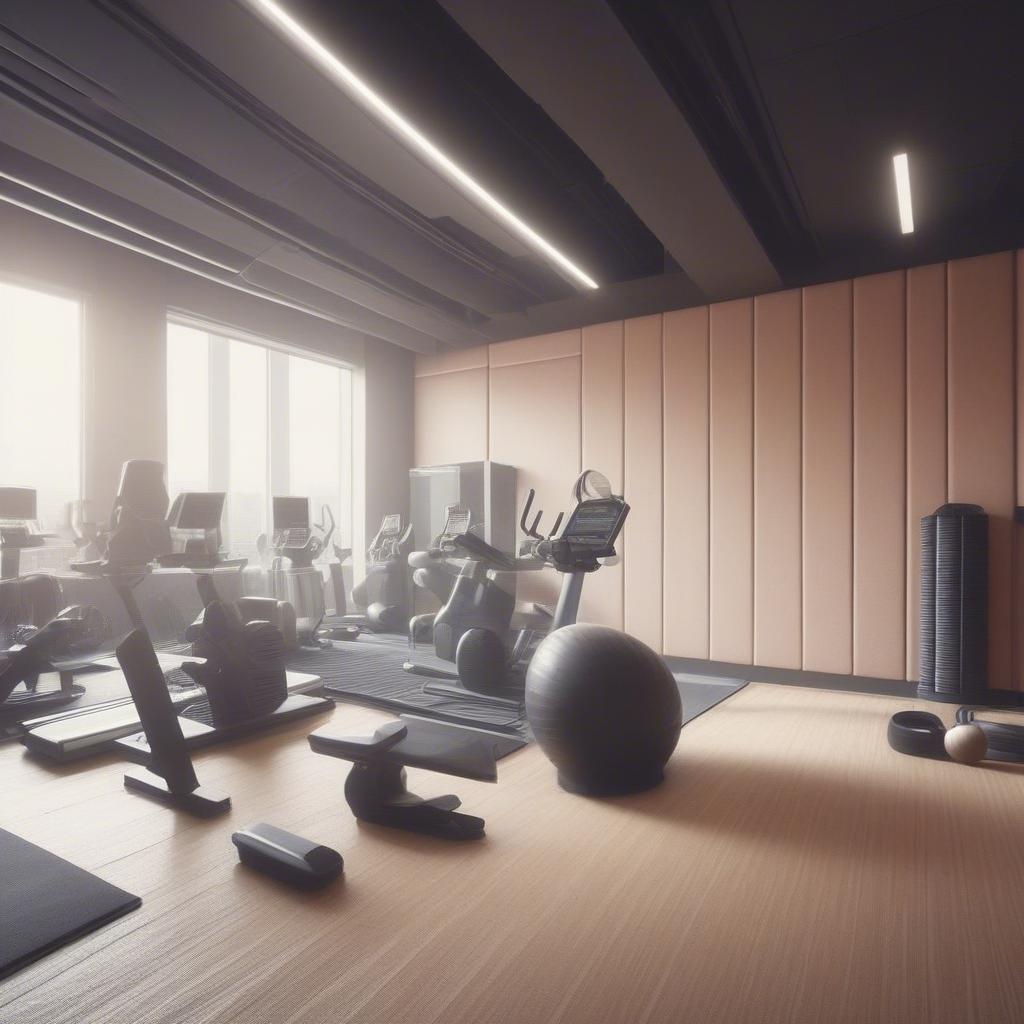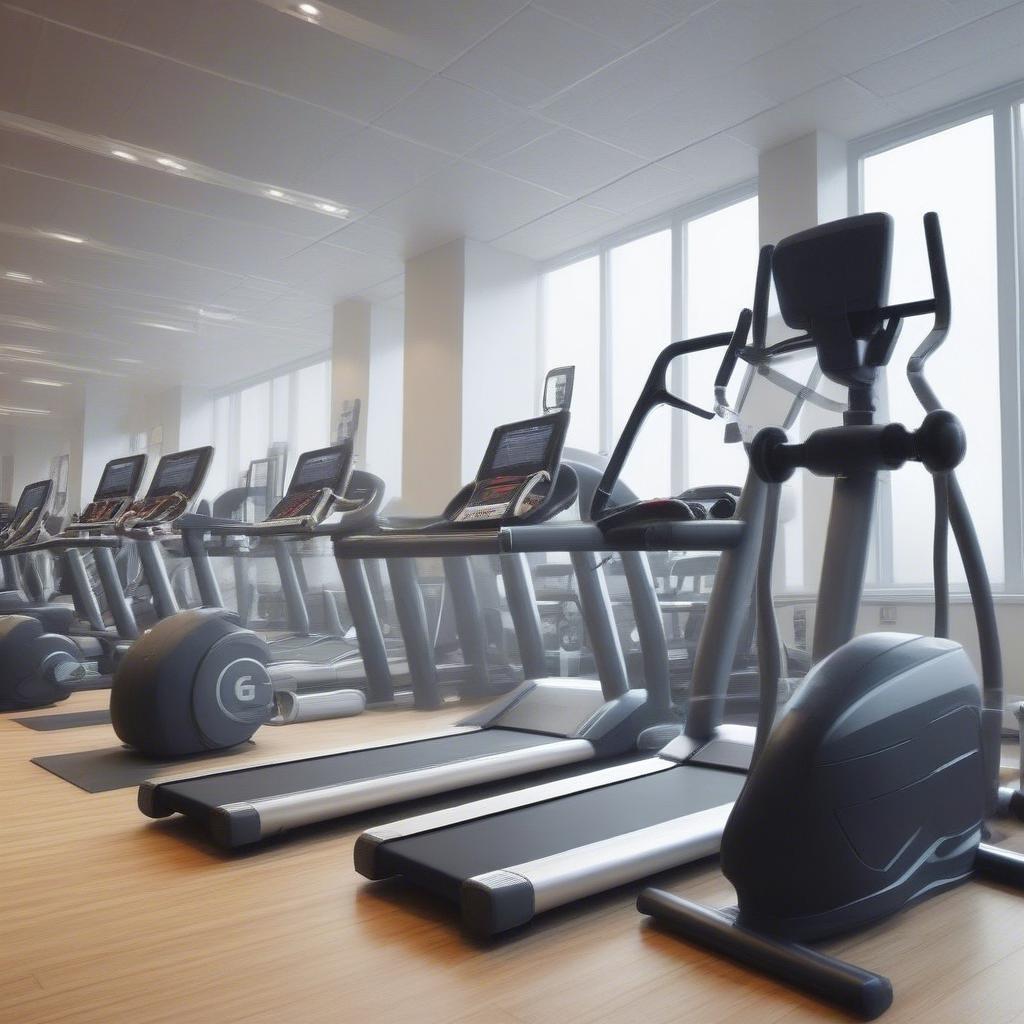
Soundproofing Tips for a Quieter Gym Environment
The rhythmic clang of weights, the grunts of exertion, the whir of treadmills – a gym is a symphony of sound. While that energy can be motivating, it can also become overwhelming, irritating, and even detrimental to the overall experience of your members. Creating a quiet gym environment isn’t just about peace and tranquility; it’s about fostering a space where people can focus on their fitness, feel comfortable, and ultimately, be more likely to return. This guide provides comprehensive gym soundproofing strategies to help you transform your gym from a noisy cacophony into a haven of focused fitness.
Why Soundproofing Your Gym is Crucial
Before diving into the "how," let’s explore the "why." The benefits of noise reduction in a gym extend far beyond simply creating a quieter space. Consider these advantages:
-
Enhanced Member Experience: Excessive noise can be a major deterrent for gym-goers. It can make it hard to concentrate, listen to music, or simply relax. A quiet gym environment fosters a sense of calm and focus, leading to a more positive workout experience and increased member satisfaction.
-
Improved Focus and Performance: When the auditory environment is chaotic, it can distract members and negatively impact their workouts. With less noise, members can concentrate better, stay motivated, and achieve their fitness goals more effectively.
-
Reduced Stress and Anxiety: Loud gyms can be overwhelming for many individuals, especially those with sensory sensitivities or those seeking a more relaxed workout. By reducing the noise level, you create a more inclusive and welcoming environment for all.
-
Increased Member Retention: Happy members are loyal members. By creating a more pleasant and comfortable space, you improve member retention rates and attract new clients looking for a quiet gym environment.
-
Better Reputation and Branding: A well-managed gym with careful attention to details, such as gym soundproofing, reflects positively on your business. It communicates professionalism and care, enhancing your brand reputation.
-
Compliance with Regulations: In some locations, noise levels are regulated. Proper soundproofing can help you meet these regulations and avoid potential fines or complaints.
Understanding Sound and Noise in a Gym
Before implementing solutions, understanding the types of sound and noise in a gym is crucial. Broadly, we can categorize them into:
- Impact Noise: This is generated when objects collide. In a gym, examples include weights dropping, dumbbells clanging, and people jumping. Impact noise travels through the structure of the building – walls, floors, and ceilings.
- Airborne Noise: This type of noise travels through the air. In a gym, this includes loud music, conversations, yelling, and the noise of machines.
Understanding these distinctions is key to choosing the right gym soundproofing techniques.
Gym Soundproofing: Strategies and Techniques
Now, let’s dive into specific strategies to reduce noise and create a quiet gym environment. These techniques are categorized based on the areas where they are most applicable.
Soundproofing the Walls
Walls are major conduits for both impact and airborne noise. Here are some effective methods to address them:
-
Acoustic Wall Panels: These panels are designed to absorb sound waves, preventing them from reflecting and reverberating in the space.
- Types: Fabric-wrapped panels, foam panels, wood acoustic panels.
- Installation: Mount panels directly onto the walls. You can create patterns or designs for aesthetic appeal while achieving soundproofing.
- Benefits: Effective for reducing echoes and overall noise levels. Cost-effective and easy to install.
- Actionable Tip: Choose panels with a high Noise Reduction Coefficient (NRC) for better absorption. The NRC rating indicates how much sound a material can absorb. The higher the NRC, the better its sound absorption.
-
Soundproof Wall Paint: Though not as effective as panels, this paint contains special fillers and resins that help absorb sound.
- Installation: Apply multiple coats of the paint according to the manufacturer’s instructions.
- Benefits: Adds a layer of sound absorption and reduces the overall noise level. A relatively easy and inexpensive method.
- Actionable Tip: Combine soundproof paint with other methods for maximum impact.
-
Mass Loaded Vinyl (MLV): A heavy, dense material that adds mass to the walls, preventing sound from traveling through.
- Installation: Install MLV behind drywall or directly onto the wall studs.
- Benefits: Highly effective for blocking both airborne and impact noise. Excellent at preventing sound transmission between rooms.
- Actionable Tip: Consider using a professional for MLV installation to ensure correct application and maximum effectiveness.
-
Double Layer Drywall: Adding a second layer of drywall separated by a resilient channel (a metal strip that decouples the drywall) can substantially reduce noise transfer.
- Installation: Attach the resilient channels to the existing wall studs and then install a second layer of drywall.
- Benefits: Effective at blocking sound transmission, especially lower frequencies.
- Actionable Tip: Use sound-dampening compound between the drywall layers for increased performance.
-
Acoustic Curtains or Drapes: While primarily used for windows, heavy, sound-absorbing curtains can also be used along walls for added absorption, especially in areas with large, hard surfaces.
- Installation: Hang curtains like traditional window coverings.
- Benefits: Improves aesthetics, adds a layer of sound absorption, and is easy to install.
- Actionable Tip: Choose thick, layered curtains with sound-absorbing materials.
Soundproofing the Floors
Floors are major transmitters of impact noise. Here’s how to dampen the sound of dropped weights and heavy equipment:
-
Rubber Flooring: This is one of the most effective solutions for minimizing impact noise.
- Types: Interlocking rubber tiles, rolled rubber flooring, rubber mats.
- Installation: Lay the rubber flooring over the existing floor, following the manufacturer’s instructions.
- Benefits: Highly effective at absorbing impact noise from dropped weights and equipment. Easy to install and maintain.
- Actionable Tip: Consider using thicker rubber flooring for heavier workout areas for maximum noise reduction.
-
Underlayment: Laying an underlayment beneath your flooring acts as a sound buffer.
- Types: Cork, foam, or recycled rubber underlayment.
- Installation: Place underlayment between the existing floor and your chosen flooring material.
- Benefits: Effective at damping impact noise and preventing it from transferring to lower floors.
- Actionable Tip: Choose an underlayment with a high Sound Transmission Class (STC) rating for better noise reduction.
-
Weightlifting Platforms: These platforms provide a designated area for heavy lifting, helping to contain the impact and reduce noise.
- Types: Wooden platforms with rubber bumpers, custom built platforms.
- Installation: Build or purchase platforms and place them in designated areas of the gym.
- Benefits: Reduces impact noise from weightlifting and protects the floor.
- Actionable Tip: Use high-quality, dense materials in the construction of the platforms for optimal sound absorption.
-
Carpet or Area Rugs: While not as effective as rubber flooring, strategically placed carpets and rugs can help absorb some sound in less intense workout areas.
- Installation: Place rugs and carpets in areas where some absorption will help reduce echoing.
- Benefits: Adds visual warmth and absorbs some airborne and impact noise.
- Actionable Tip: Choose thick, dense rugs with a high pile for better sound absorption.
Soundproofing the Ceilings
Ceilings can also transmit noise, particularly if your gym is located in a shared building. Here’s how to manage ceiling soundproofing:
-
Acoustic Ceiling Tiles: These tiles are designed to absorb sound, reducing reverberation and overall noise levels.
- Types: Mineral fiber tiles, foam tiles, fabric-wrapped tiles.
- Installation: Replace existing ceiling tiles with acoustic ones or attach them directly to the ceiling.
- Benefits: Effective for reducing echoes and absorbing airborne noise. Cost-effective and relatively easy to install.
- Actionable Tip: Choose tiles with a high NRC rating for maximum sound absorption.
-
Suspended Acoustic Baffles: These baffles hang vertically from the ceiling and are designed to absorb sound from all sides.
- Types: Fabric-wrapped baffles, foam baffles, rigid baffles.
- Installation: Hang baffles from the ceiling at strategically determined intervals.
- Benefits: Effectively absorbs airborne noise and reduces reverberation. Can be used in combination with acoustic ceiling tiles.
- Actionable Tip: Place baffles strategically in areas where sound is generated.
-
Insulation: Adding insulation in the ceiling cavity can reduce the transfer of noise between floors.
- Types: Mineral wool insulation, cellulose insulation, fiberglass insulation.
- Installation: Add insulation into the cavity in the ceiling, consult a professional if needed.
- Benefits: Reduces the transfer of both airborne and impact noise through the ceiling. Helps to manage temperature in the space as well.
- Actionable Tip: Consider using blown-in insulation for hard-to-reach areas.
Noise Management Strategies
Beyond physical soundproofing, implementing good management practices can also contribute to a quiet gym environment:
-
Designated Zones: Clearly define areas for different activities, separating high-impact zones from quieter areas like stretching or cardio. This can help manage noise levels and prevent disturbances.
- Benefits: Separates noisy activities from quieter ones, improving the overall flow of the space.
- Actionable Tip: Designate “quiet zones” with appropriate signage to encourage mindful behavior from members.
-
Music Control: Manage the volume and type of music played in the gym. Loud, abrasive music can contribute to the overall noise levels and hinder focused workouts.
- Benefits: Reduces overall noise levels and makes the gym a more relaxing and welcoming environment.
- Actionable Tip: Offer different music playlists depending on the time of day or activity type.
-
Equipment Placement: Arrange equipment to minimize noise. Avoid placing noisy machines close to quieter areas.
- Benefits: Reduces unnecessary disturbances and optimizes the layout for maximum comfort.
- Actionable Tip: Place treadmills and ellipticals away from weightlifting areas or quiet stretches areas.
-
Member Education: Educate members on the importance of being mindful of noise levels. Encourage them to lower weights gently and be aware of others.
- Benefits: Fosters a sense of community and reduces noise levels caused by thoughtless habits.
- Actionable Tip: Post signs or create announcements about respecting noise levels within the gym.
-
Regular Equipment Maintenance: Regular maintenance of equipment can prevent rattling, squeaking, and other unwanted noises.
- Benefits: Ensures proper equipment operation and decreases noise.
- Actionable Tip: Schedule regular maintenance checks and repairs of noisy equipment.
Creating a Soundproofing Checklist
Here’s a checklist to help you implement your gym soundproofing plan:
- Assess the Current Situation: Identify areas with the most significant noise issues and the types of noise they generate (impact or airborne).
- Prioritize Solutions: Based on your assessment, prioritize the most critical areas for soundproofing and choose solutions that best address the issues.
- Develop a Budget: Establish a budget for soundproofing materials and any required professional services.
- Install Soundproofing Materials: Choose the best method and install materials using expert advise, based on their function and the noise issue.
- Monitor and Adjust: After installation, monitor noise levels and make any necessary adjustments to the setup.
- Implement Noise Management: Implement sound management protocols for a comprehensive approach to noise reduction.
- Regularly Evaluate: Regularly evaluate the effectiveness of your efforts and make adjustments as needed.
How Learn Business Supports Your Business Goals
Creating a quiet gym environment requires a strategic plan, resources, and the right knowledge. Learn Business is dedicated to supporting businesses like yours by providing guidance and resources tailored to your specific needs. Whether you’re looking to improve operational efficiency, enhance the member experience, or increase revenue, Learn Business offers a wide array of resources. We understand the unique challenges that businesses face, and we’re here to help you succeed.
Here’s how Learn Business can assist you:
- Business Planning: Develop robust business plans tailored to your needs using templates and expert guidance, covering all aspects of your operations, from soundproofing projects to budgeting for overall improvements.
- Financial Planning: Learn to create and manage your finances with budgeting and expense tracking templates that make the process seamless.
- Marketing Strategies: Discover actionable marketing strategies to attract and retain more members, including tips on highlighting the benefits of a quiet gym environment in your marketing materials.
- Operational Guidance: Get expert advice on improving operational efficiency within your gym, including strategies to enhance the member experience and manage noise levels.
- Templates & Resources: Access a library of templates, checklists, and guides designed to help you streamline your operations and improve your business performance, including templates for project management and checklists for soundproofing implementation.
Learn Business is committed to empowering your business to thrive. Visit our website and discover how our tailored resources can support your objectives and help you build a stronger, more profitable business, including creating and maintaining a quiet gym environment.
Conclusion
Creating a quiet gym environment is an investment that pays dividends in member satisfaction, improved focus, and ultimately, a more successful business. By understanding the principles of sound and applying the right gym soundproofing techniques, you can transform your gym into a welcoming and productive space. Remember to consider a combination of soundproofing solutions, noise management strategies, and member education for a holistic approach to noise reduction. By following these guidelines, you can create the ideal fitness space where members can achieve their goals without the distraction of excessive noise. Learn Business is here to support you every step of the way, providing the resources and expertise you need to succeed. Invest in your gym’s sound environment, and invest in the success of your members and your business.



Leave a Reply